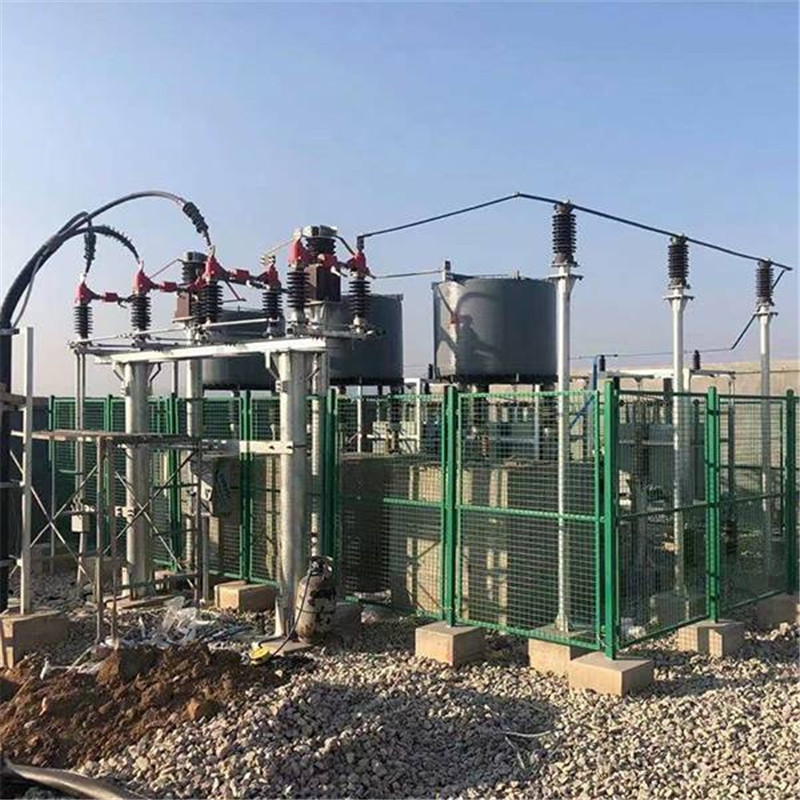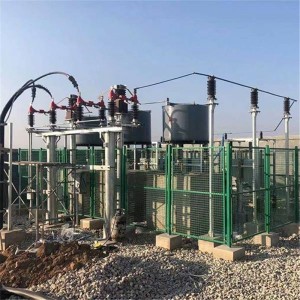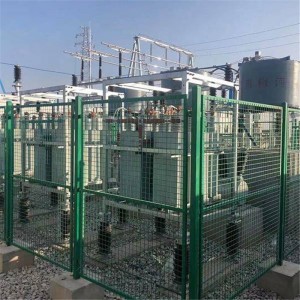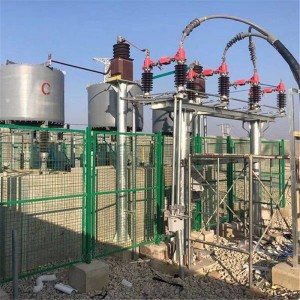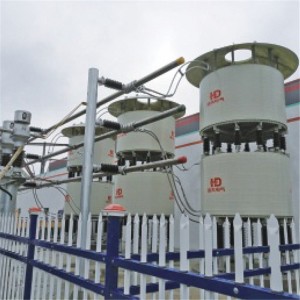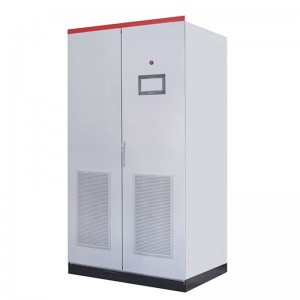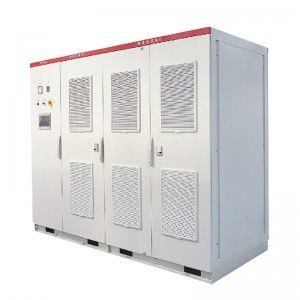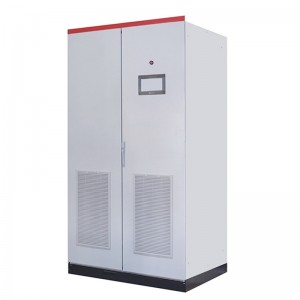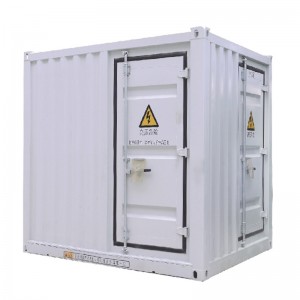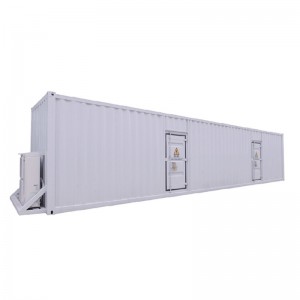HYSVC series high voltage dynamic reactive power compensation filter device
product description
The main ones are:
●There are severe voltage fluctuations and flicker.
●A large number of high-order harmonics are generated: the electric arc furnace is dominated by low-orders such as 2~7; the rectifier and frequency conversion loads are mainly 5, 7. 11, and 13.
●Cause serious three-phase unbalance in the power grid, resulting in negative sequence current.
●Low power factor leads to power loss.
The way to completely solve the above problems is that the user must install a dynamic var compensator (SVC) with a fast response speed. Grid voltage, improving production efficiency, and minimizing the effects of flicker. The phase-splitting compensation function of svc can eliminate the three-phase unbalance caused by unbalanced load, and the filter device can eliminate harmful high-order harmonics and improve power quality, and improve power factor by providing capacitive reactive power to the system.
product model
Model Description
SVC is divided into two types: centralized SVC and distributed SVC
The centralized SVC is generally installed on the high-voltage bus in the substation or power distribution room, and its voltage is generally 6kV~35kV. Centralized compensation for the load of the whole plant is currently used in China.
Distributed SVC is generally distributed and installed next to the impact load (such as the secondary side of the rectifier transformer), and its voltage is the same as the load voltage, and the impact load is compensated locally. Distributed compensation has the characteristics of saving energy and reducing the load of transformers.
Applications and Selection Guide
This product is mainly used in electric arc furnaces, rolling mills, mine hoists, electric locomotives, wind farms and other occasions.
●The voltage on the secondary side of the electric arc furnace is low and variable, and a centralized SVC is generally used.
●When the number of rolling mills in the rolling mill is small, distributed SVC is generally used, which has a good energy-saving effect, stable voltage on the secondary side of the rectifier transformer, high production efficiency, and less investment.
●When the number of rolling mills in the rolling mill is large, distributed SVC or centralized SVC can be used. Distributed SVC has a good energy-saving effect, stable voltage on the secondary side of the rectifier transformer, and high production efficiency. High investment centralized SVC Although the energy saving effect is slightly worse, but the investment is less.
●Mine hoist generally adopts distributed SVC plus high-voltage filtering device. The distributed SVC mainly compensates the impact load of the hoist, and the high-voltage filter device compensates the rest relatively stable dynamic loads.
●The power system of a wind farm is generally small, and the voltage drop at the wind turbine terminal is relatively large. It is recommended to use a distributed SVC.
Technical Parameters
Device Features
●The filter bank is fixed, so it no longer needs to switch automatically according to the load change, so its reliability is greatly increased.
●Automatically track system parameters according to load changes, automatically change the trigger angle of TCR, thereby changing the output power of TCR.
●Using advanced DSP digital technology, the operating speed is <10ms; the control accuracy is ±0.1 degree. <>
●Centralized SVC adopts advanced photoelectric trigger technology, which makes high and low voltage electrical isolation and improves anti-interference ability. The BOD thyristor protection technology is adopted to quickly and effectively protect the thyristor. The high-purity water cooling technology is used to rapidly cool the valve group and ensure the reliable operation and efficiency of the thyristor.
●Distributed SVC thyristors do not need to be connected in series or in parallel, and their reliability is greatly improved.
TCR+FC static low-voltage dynamic reactive power compensation device (SVC) is mainly composed of three parts, FC filter, TCR thyristor control circuit and control protection system. The FC filter is used to provide capacitive reactive power compensation and harmonic filtering, and the TCR thyristor control reactor is used to balance the inductive reactive power generated by the load fluctuation in the system. By adjusting the firing angle of the thyristor, the current flowing through the reactor is controlled to achieve the purpose of controlling reactive power. The SVC device changes the reactive power (inductive reactive power) of the reactor according to the change of the reactive power Qn of the load, that is, no matter how the reactive power of the load changes, the sum of the two must always be a constant, which is equal to the capacitor bank The value of the capacitive reactive power sent out makes the reactive power Qs taken from the grid constant or 0, and finally keeps the power factor of the grid at the set value, and the voltage hardly fluctuates, so as to achieve the purpose of reactive power compensation. Suppress system voltage fluctuation and flicker caused by load fluctuation
Charge curve, Qr is the reactive power curve absorbed by the reactor in SVC. Figure 2 is the lower CR+FC static
Schematic diagram of the dynamic var compensator (SVC).
Other parameters
Conditions of Use
●The altitude of the installation and operation area generally does not exceed 1000m, and plateau type is required if it exceeds 1000m, which must be specified when ordering.
●The ambient temperature of the installation and operation area should not exceed -5°C~+40°C for indoor installations and -30°C~+40°C for outdoor installations.
●There is no severe mechanical vibration, no harmful gas and steam, no conductive or explosive dust in the installation and operation area.
Dimensions
Technical support and service
●Load measurement
Including the amount of harmonic current generation of various nonlinear loads, the distortion rate of the sinusoidal waveform of the power supply bus voltage, the background harmonics of the power system, the voltage fluctuation and flicker caused by reactive power impact, etc.
●System research
Including relevant power system parameters. All wiring and equipment parameter studies with nonlinear loads.
●System evaluation
Actual measurement or theoretical calculation of harmonic generation, voltage fluctuation value and prediction of its hazards, and a preliminary plan for governance.
●Optimized design
Including equipment parameter selection, optimal system design and equipment design of main components, and plant design.
●Guided installation
Provide complete sets of equipment for dynamic reactive power compensation devices, and provide guidance on proper installation of equipment
●On-site commissioning
Provide on-site tuning test and index assessment of low-voltage dynamic reactive power compensation device
●After-sales service
Provide training, warranty, system upgrade and other services
